What is overthinking?
Overthinking happens when a thought trapped inside your head goes in circles and you simply can't stop. Dwelling on or worrying about the same thing repeatedly distracts you from your goals and derails you from your path.
Continuously analyzing, ruminating on past events, future possibilities, or present circumstances by playing the tape on repeat keeps you trapped in a cycle of worry, doubt, and indecision, which can lead to increased stress, mental exhaustion, and impact overall well-being.
Overthinking is invasive. It latches onto your worst fears, insecurities or things you don't like about yourself and believe to be true. It can lead to worry, anxiety, stress, frustration, anger, nervousness, rumination or at times may even turn into obsession.
Examples of overthinking:
-
Excessive monitoring
-
Over analyzing
-
Constantly reevaluating
-
Obsessive worrying
-
Compulsive controlling
Are there different types of overthinkers?
There are three types of overthinking:
-
Rumination
-
Future tripping
-
Overanalyzing
Rumination
Repetitively dwelling on past events involving negative aspects, such as mistakes, regrets, or perceived failures and continuously replaying or analyzing them from different angles but struggling to find resolution or closure.
Why did I mess up that presentation? That's all I can think about.
Why did I say that? I can't stop thinking about how stupid I sounded.
That awkward moment from yesterday's meeting keeps replaying in my head.
Fixating on perceived failures, shortcomings, or worries leads to increased feelings of sadness, anxiety, guilt, regret, shame or distress.
Signs to watch out for:
-
Fixating on negative feedback or criticism you received.
-
Past failures or mistakes consume a significant amount of your time.
-
You've difficulty letting go of something you said or did that didn't end up well.
Future tripping
Excessively worrying about the future and becoming preoccupied with hypothetical scenarios and potential problems that have not yet occurred. The uncertainty of what lies ahead and the fear of the unknown keeps you stuck and holds you back from taking action and moving forward.
What if I never get promoted and I'm stuck in this dead-end job forever?
What if I never achieve my goals and end up living a life of regret?
What if I never find someone who loves me for who I am?
Future tripping causes feelings of fear, anxiety and overwhelm.
Signs to watch out for:
-
Obsessively planning and preparing for every possible outcome to avoid perceived future threats or disasters.
-
Avoid taking risks or trying new experiences due to fear of potential negative consequences in the future.
-
Struggle to enjoy the present moment, relax or unwind due to persistent thoughts about what might go wrong down the line.
Overanalyzing
Excessively scrutinizing or dissecting information, situations, or events in an attempt to understand them fully or predict their outcomes driven by anxiety, perfectionism, or a fear of making mistakes. Delving deeply into details, often beyond what is necessary or productive, often stems from a desire for certainty or control and can lead to feelings of confusion, indecision, or overwhelm.
I spend hours weighing the pros and cons of each option, unable to make a decision because I'm afraid of making the wrong choice.
I find myself constantly worrying about what others might think of me, analyzing every interaction for signs of disapproval.
I'm constantly second-guessing my decision to apply for that job, wondering if I'm qualified enough.
Overanalyzing causes feelings of confusion, self-doubt and nervousness.
Signs to watch out for:
-
Feeling overwhelmed by the sheer volume of information or possibilities.
-
Spending excessive time researching and planning, often to the point of procrastination.
-
Second-guessing yourself or constantly seeking reassurance from others.
What causes overthinking?
If you have the tendency to overthink, you must have asked yourself "Why am I like this?" many times.
What answers did you get?
It's my personality. This is just who I am.
It runs in the family. I got it from my parents.
It's my mind. I can't control it irrespective of how hard I try.
No one single cause determines why you tend to overthink. It results from a mix of many different factors.
Intrinsic factors (Not under your control)
You may genetically inherit tendency to overthink from your parents. Research shows that certain genes come with a risk for developing anxiety. However, just because your biology and genetic roots play a role in your tendency to obsess about negative thoughts, it doesn't mean that overthinking is inescapable.
Environmental factors (You have limited control)
Life experiences in combination with your genetic predisposition decide whether overthinking will be a problem for you or not. Your childhood, upbringing (parenting style and family dynamics), work environment and people close to you significantly impact your thinking style. When anxiety and tension are a normal part of your work life, or people around you demonstrate toxic or disruptive behavior, it's natural to adopt some of those anxiety inducing behaviors.
Your habits and lifestyle (Completely under your control)
Your daily habits and lifestyle, though often overlooked, also play a subtle role in your tendency to overthink. Habits like addiction to social media, lack of physical activity, spending long working hours at a desk, not eating well, or too much indulgence in watching television can have a profound impact on your psychological well-being which can exacerbate your tendency to overthink.
What happens when you overthink too much?
Overthinking can lead to:
-
Elevate stress levels and exacerbate feelings of anxiety.
-
Poor decisions by making choices based on irrational fears.
-
Feelings of guilt, regret, or resentment.
-
Constantly questioning others can lead to conflict and mistrust in relationships.
-
Missed opportunities for personal or professional growth.
-
Doubting one's abilities can erode self-confidence and self-esteem over time.
-
Difficulty in focusing on tasks thereby decreasing productivity.
-
Impact health negatively with headaches, muscle tension, digestive problems, and sleep disturbances.
What are the signs of overthinking?
You're overthinking when you:
-
Dwell on past events, mistakes, or regrets without moving forward or finding solutions.
-
Have difficulty relaxing or experiencing moments of peace due to a persistent stream of thoughts.
-
Feel exhausted or drained out due to the constant mental activity associated with overthinking.
-
Find it hard to focus on tasks or stay present in the moment.
-
Experience insomnia or disrupted sleep patterns due to racing thoughts or worry.
-
Constantly replay scenarios or conversations in your mind without reaching resolution.
-
Delay tasks or avoid taking action due to fear of making the wrong choice or being overwhelmed by options.
-
Try hard to control your thoughts or stop them from occurring.
-
Find it difficult to make decisions because of doubting every possible option.
What is healthy thinking vs unhealthy thinking?
Healthy thinking (Inspires and motivates you to do better)
-
Constructive problem solving aimed at finding solutions to problems or making informed decisions.
-
Maintaining a realistic perspective, distinguishing between rational concerns and irrational worries.
-
Recognizing when it's necessary to step back from overanalyzing.
-
Accepting imperfections and learning from mistakes.
-
Openness to different perspectives and outcomes.
-
Focusing on the present moment and becoming non-judgmental.
Unhealthy thinking (Keeps you stuck in your head and prevent you from moving forward)
-
Dwelling excessively on past mistakes or worrying about the future.
-
Focusing only on the negative aspects of a situation while ignoring other possibilities.
-
Exaggerating problems and magnifying worst-case scenarios.
-
Seeing things as black-and-white or right-and-wrong.
-
Drawing broad conclusions based on limited evidence or single negative experience.
-
Harsh self-judgment and self-blame.
How do you stop overthinking?
To stop overthinking, apply the 10 strategies provided in this workbook:
-
Change Your Story:Your thoughts are not facts and there are alternative ways to interpret them, often in more positive ways. This is possible using Cognitive restructuring, which is an effective intervention technique to reduce overthinking.
-
Calm Your Inner Alarmist: When you engage in catastrophizing, you jump to the most extreme and negative conclusions without considering more realistic or balanced alternatives, which contributes to a cycle of anxiety and avoidance with increased stress and a skewed perception of reality. To stop catastrophizing, you need to shift the focus away from catastrophic thoughts and replace them with more rational alternatives. Decatastrophizing technique helps you achieve that.
-
Break Up With Worry: There are many parts of your life that you have no control over. Fixating on these aspects of your life that you cannot change leads to frustration, stress and anxiety. The more attention you pay to things beyond your control, the more stuck you get. A powerful framework to manage your worry is to look at it through the lens of control―is the worry within your control or outside it.
-
Become Comfortable With Good Enough: When making a decision, it’s good to consider different options, alternative viewpoints and multiple sources. They prevent your biases, personal beliefs or other circumstantial constraints from limiting your decision and hence the outcome you achieve. To stop overthinking and steer yourself in the right direction, become a SATISFICER.
-
Reorient Your State of Mind: Visualization is a powerful tool to prevent overthinking by providing a structured way to focus the mind and redirect it towards productive and positive outcomes. By immersing yourself in the visualization process, you can harness the power of imagination, emotion, and intention which can help reorient your state of mind by activating positive emotions, reinforcing positive beliefs and attitudes, clearing mental clutter and distractions.
-
Kill Your Stressors: High workloads, major life changes, job insecurity, conflict with family members, financial instability and multiple other factors can be a source of stress for you. Poor lifestyle choices, negative thinking patterns or a tendency to worry excessively can exacerbate these stressors making it difficult to lead a happy and healthy life. You can't avoid stress, but you can certainly learn to manage it well. To do this, you need to apply the right strategies by taking charge and acting before it's too late. Respond to any life stress in four possible ways.
-
Embrace the Present: Overthinking disconnects you from the present moment by pulling you into your past or carrying your fears way into the future. Bringing your awareness back to the present moment can redirect attention away from intrusive thoughts and put a halt on overthinking. Put your overthinking brain on pause by engaging your senses using the 5-4-3-2-1 grounding technique.
-
Relax Your Body: Overthinking may start with your thoughts, but it also shows up in your body―all that stress can lead to tension and muscle stiffness throughout your body. The mind and body are deeply interconnected. Releasing physical tension can send feedback to the brain that the body is safe and at ease which can help calm the mind and reduce overthinking. Progressive Muscle Relaxation (PMR) technique helps you achieve this.
-
Ride Out Intense Emotions: When you're feeling overwhelmed by emotions, focusing on your breath can help shift your attention away from distressing thoughts or situations. By directing your focus to the physical sensation of breathing, you can create a mental space between yourself and the source of your emotions, allowing for greater clarity and perspective. 4-7-8 is a focused breathing exercise that interrupts the body's stress response by redirecting attention away from intrusive thoughts or emotions.
-
Act With Intention: Channeling energy into concrete actions can prevent overthinking by shifting focus from rumination to problem-solving, thereby reducing uncertainty and providing a sense of control and accomplishment.
Additionally, use the self reflection exercises to reflect on your experiences and track progress in managing overthinking.
What are the 4 A's of stress management?
High workloads, major life changes, job insecurity, conflict with family members, financial instability and multiple other factors can be a source of stress for you. Poor lifestyle choices, negative thinking patterns or a tendency to worry excessively can exacerbate these stressors making it difficult to lead a happy and healthy life.
Under stress, the body's nervous system activates, leading to a state of heightened arousal. This can result in racing thoughts, making it difficult to quiet the mind and focus on the present moment. Left unhandled, stress can evoke a sense of loss of control, making you feel helpless or powerless. It can feed into your overthinking tendency, creating a vicious cycle that's hard to break.
You can't avoid stress, but you can certainly learn to manage it well. To do this, you need to apply the right strategies by taking charge and acting before it's too late.
You can respond to any life stress in four possible ways:
-
Avoid the stressor (Change the situation)
-
Alter the stressor (Change the situation)
-
Adapt to the stressor (Change your reaction)
-
Accept the stressor (Change your reaction)
Avoid the stressor
You may let stress into your life without realizing that you have a choice in deciding what you let in and what you leave out.
While you can't control everything, a part of your stress is voluntary as you fail to recognize people, situations, or activities that trigger stress and refuse to walk away from them. Avoiding stress does not mean ignoring problems or running away from responsibilities. It's learning to say no to people, situations or problems that demand too much of your mental energy and are either unnecessary or harmful.
Examples:
-
Certain news topics trigger your anxiety? Avoid consuming news before bedtime.
-
Feeling overwhelmed by social commitments this week? Avoid taking on additional tasks or obligations.
-
Some people at work spread negativity and pessimism? Avoid interacting with them unless absolutely necessary.
Minimize exposure to unnecessary stressors in your life:
-
Know your limits and learn to say no to activities that stretch those limits.
-
Avoid people who stress you out by limiting the amount of time you spend with them or ending the relationship entirely.
-
Skip stressful activities or events that are not mandatory.
Alter the stressor
If you can't avoid the situation, the next step is to try to change it in a way that makes it more bearable and less taxing for you. This often involves clearly stating what you want and communicating your needs upfront or proactively taking steps to minimize overwhelming situations―set boundaries, delegate tasks, or seek support from others.
Examples:
-
Got too much on your plate? Alter your schedule by prioritizing tasks and breaking them down into smaller, more manageable steps.
-
Possibility of a conflict with your mother-in-law over the upcoming festivities? Define boundaries and clearly communicate areas where they can be involved and things that are off limits.
-
Can't avoid your neighbor's party that you hate attending? Set upfront expectations that you have an early morning meeting and need to leave the party early.
Alter the situation to reduce the stressor and lessen their impact:
-
Delegate tasks at work to reduce workload and pressure.
-
Set boundaries and communicate openly with others to address sources of tension or conflict.
-
Seek alternative routes or methods to handle the situation more efficiently.
Adapt to the stressor
When you can't avoid or alter the stressful situation, adapting and adjusting your response to it can do the trick. This involves looking at the situation through a different lens―one that treats challenge as an opportunity―by changing your perspective, expanding your mindset and realigning your expectations. Adapting to the situation this way changes the way you approach it. Instead of dwelling on the problem, you think about alternative ways to respond that may be more constructive or beneficial.
Examples:
-
Facing health issues that disrupts your workout schedule? Adapt by modifying your exercise routine to include low-impact activities that still promote physical well-being.
-
Facing a setback in your personal goals? Adapt by reframing it as a temporary setback rather than a permanent failure. Use this experience to reassess your approach and make necessary adjustments to continue moving forward.
-
Experiencing financial strain? Adapt by creating a budget and exploring cost-saving measures to alleviate immediate stress while working towards long-term stability.
Adapt to the situation by changing your perspective:
-
Adjust expectations and goals to align with current circumstances, allowing for more realistic and achievable outcomes.
-
Adopt a positive mindset by reframing challenges as opportunities for growth and learning.
-
Challenge negative thoughts and replace them with positive self-talk. Practice self-compassion and remind yourself that it's okay to make mistakes or face setbacks.
Accept the stressor
When you can't avoid, alter or adapt to a situation, it's wise to accept that it's simply beyond your control and trying to change it will lead to a dead-end. Acceptance does not mean agreeing with what's happening or denying how you feel about it. It's coming to terms with your emotions while acknowledging things you can't change so that you can focus on what you can.
For example:
-
Your flight got delayed and you're going to miss an important meeting. There's nothing you can do about it. Accept the situation and use the time to relax.
-
You didn't get the promotion you hoped for. Accept that it wasn't meant to be and focus on improving your skills for future opportunities.
-
You experience a significant personal loss which is heartbreaking. Accept that it's a natural part of life. Focus on grieving in a healthy way and find ways to honor the memory of what you've lost.
Embrace the reality that certain stressors are beyond your control:
-
Acknowledge limitations and imperfections rather than striving for unattainable perfection.
-
Let go of the need for control over uncontrollable situations or outcomes.
-
Practice mindfulness and self-compassion to accept difficult emotions without judgment.
How do you use visualization to achieve your goals?
When your sense of awareness becomes narrow and distorted, your mind pulls you into dark places where you feel helpless and out of control. Negative feelings like fear, anxiety, frustration, insecurity, and feelings of isolation thrive when you are in this zone. Narrow focus limits your awareness of alternative perspectives, solutions, and possibilities, thereby trapping you in a cycle of rumination.
You can break out from getting trapped into a tunnel vision by shifting your perspective away from negative or unproductive thoughts and directing them towards the goals and outcomes you wish to achieve.
Visualization is a powerful tool to prevent overthinking by providing a structured way to focus the mind and redirect it towards productive and positive outcomes. By immersing yourself in the visualization process, you can harness the power of imagination, emotion, and intention which can help reorient your state of mind by:
-
Activating positive emotions
-
Reinforcing positive beliefs and attitudes
-
Clearing mental clutter and distractions
Adopting a positive attitude by visualizing a positive outcome can render negative thinking ineffective. It can depressurize the moment by replacing anxiety and fear with the confidence required to do the job. Positive thinking in the form of positive images of the final outcome not only distracts you from fear of failure, it also helps you focus on the details for achieving success.
Do a mental check mark as you go through each step. Use all your senses to make the visualization as real and detailed as possible:
-
Find a quiet and comfortable space where you can relax without distractions. This could be a quiet room, a peaceful outdoor setting, or any place where you feel comfortable and at ease.
-
Start with defining what you wish to achieve. Repeat it to yourself multiple times. Give your mind a few seconds to align with your goals.
-
Next, break down your goal into actionable steps and visualize yourself completing each step successfully.
-
Anticipate potential challenges and obstacles that stand in your way. Imagine staying committed and motivated in the face of setbacks and overcoming these challenges with resilience and determination.
-
Finally, visualize reaching your destination and achieving the desired outcome. Explore the feelings of joy, pride, fulfillment, or satisfaction that accompany achieving your goal. Think about all the positive effects of achieving this goal on your personal and professional life.
What is 5-4-3-2-1 grounding technique?
Overthinking disconnects you from the present moment by pulling you into your past or carrying your fears way into the future. Bringing your awareness back to the present moment can redirect attention away from intrusive thoughts and put a halt on overthinking. Use the 5-4-3-2-1 grounding technique to do this.
5-4-3-2-1 is a relaxation technique that focuses on grounding your anxiety so that you no longer continue to be in a state of overwhelm. Unhooking from your thoughts by paying attention to your senses puts a pause to your racing thoughts and helps you take back control of your thoughts and feelings. It shifts your focus from the worry consuming you about your past or future and brings you in touch with the present moment―here and now.
Train your brain to become more mindful and present:
5: Acknowledge and identify five things in your environment you can see. Focus on the details of these objects, such as their colors, shapes, or textures. Take your time, don't rush the activity. This helps shift attention away from rumination and into the present moment.
4: Now, notice four things you can feel or touch. This could be the sensation of your feet on the ground, the warmth of sunlight on your skin, or the texture of the surface you're sitting on. Paying attention to physical sensations helps anchor you in the present and interrupts the cycle of overthinking.
3: Next, identify three sounds you can hear in your environment. Listen closely to the sounds around you, whether it's the hum of traffic, the chirping of birds, or the rustling of leaves. Focusing on external sounds can help quiet internal chatter and reduce overthinking.
2: Now, notice two things you can smell. Take a deep breath and pay attention to any scents in your surroundings, whether pleasant or neutral. Engaging your sense of smell can further ground you in the present moment and provide a sensory anchor for your attention.
1: Finally, focus on one thing you can taste or imagine tasting. This could be the lingering flavor of a recent meal or the anticipation of a favorite food. Bringing awareness to your sense of taste can help center your attention and calm overactive thoughts.
What is the PMR method?
Overthinking may start with your thoughts, but it also shows up in your body―all that stress can lead to tension and muscle stiffness throughout your body. The mind and body are deeply interconnected. Releasing physical tension can send feedback to the brain that the body is safe and at ease which can help calm the mind and reduce overthinking. Progressive Muscle Relaxation (PMR) technique helps you achieve this.
PMR directs your attention away from racing thoughts into the physical sensations of muscle tension and relaxation, which can calm the nervous system and reduce the intensity of overthinking.
Follow these steps:
-
Sit or lie down in a comfortable position, free from distractions. Close your eyes if it helps you relax.
-
Take a few slow, deep breaths to help calm your mind and prepare your body for relaxation.
-
Repeat the process below with each muscle group, working your way through your entire body.
Clench or tense the muscles in each group as tightly as you can, and hold the tension for about 5-10 seconds. Focus on the sensation of tension in the muscles. Suddenly and completely release the tension in that muscle group. Let go completely and allow the muscles to relax completely. Focus on the sensation of relaxation as the tension melts away from the muscles. Allow yourself to enter into a state of deep relaxation with each muscle group, don't rush or move too quickly. Notice how the muscles feel when they are relaxed compared to when they were tense.Throughout the exercise, maintain awareness of the sensations in your body. Notice any areas of tension or discomfort, and allow them to soften and relax as you continue with the exercise.
-
-
-
Hands: Make a fist with your hands, squeezing tightly for 5-10 seconds. Release and feel the tension melt away.
-
Forearms: Tighten the muscles in your forearms by bending your wrists upward, holding for 5-10 seconds, and then releasing.
-
Upper Arms: Flex your biceps by bringing your fists toward your shoulders, holding for 5-10 seconds, and then releasing.
-
Shoulders: Shrug your shoulders up toward your ears, creating tension in the muscles, hold for 5-10 seconds, and then relax them downward.
-
Neck: Gently tilt your head backward, feeling the stretch in your neck muscles, hold for 5-10 seconds, and then return to a neutral position.
-
Face: Scrunch up your face by squeezing your eyes shut, clenching your jaw, and wrinkling your forehead, hold for 5-10 seconds, and then release.
-
Chest: Take a deep breath in, expanding your chest as much as possible, hold for 5-10 seconds, and then exhale fully, allowing your chest to relax.
-
Abdomen: Tighten your abdominal muscles by sucking your belly button toward your spine, hold for 5-10 seconds, and then release.
-
Lower Back: Arch your back slightly, feeling the stretch in your lower back muscles, hold for 5-10 seconds, and then relax into a neutral position.
-
Buttocks: Squeeze your gluteal muscles tightly, hold for 5-10 seconds, and then release.
-
Thighs: Tighten the muscles in your thighs by pressing your knees together and flexing your quadriceps, hold for 5-10 seconds, and then release.
-
Calves and Feet: Point your toes toward your body, feeling the stretch in your calf muscles, hold for 5-10 seconds, and then relax your feet and ankles.
-
-
-
Once you have relaxed all muscle groups, take a few more deep breaths, noticing how your body feels in its relaxed state. Take a moment to appreciate the sense of calm and relaxation you've cultivated.
What is the 4-7-8 breathing script?
Emotions such as anger, anxiety, or fear often coincide with heightened physiological arousal, including rapid breathing and increased heart rate. Slow, deep breathing techniques can help regulate this arousal by slowing down the breath and activating the parasympathetic nervous system, which promotes relaxation and counters the stress response.
When you're feeling overwhelmed by emotions, focusing on your breath can help shift your attention away from distressing thoughts or situations. By directing your focus to the physical sensation of breathing, you can create a mental space between yourself and the source of your emotions, allowing for greater clarity and perspective.
4-7-8 is a focused breathing exercise that interrupts the body's stress response by redirecting attention away from intrusive thoughts or emotions.
Put 4-7-8 Breathing technique to practice:
-
Deep Inhalation (4 seconds): Start by sitting or lying down in a comfortable position. Close your eyes if it helps you focus. Inhale deeply and slowly through your nose, counting to 4 as you fill your lungs with air. Try to breathe from your diaphragm rather than shallowly from your chest.
-
Hold the Breath (7 seconds): Once you've fully inhaled, hold your breath for a count of 7. During this brief pause, focus on the sensation of the air in your lungs and the stillness of your body.
-
Slow Exhalation (8 seconds): After holding your breath for 7 seconds, exhale slowly and completely through your mouth, making a whooshing sound, and count silently to 8. Empty your lungs as much as possible during this exhale.
-
Repeat the Cycle: After exhaling fully, immediately begin the next cycle by inhaling deeply again through your nose for 4 seconds, and continue the pattern of holding for 7 seconds and exhaling for 8 seconds. Aim to complete four full cycles initially, gradually increasing to more if comfortable.
-
Focus on the Breath: Throughout the practice
-
-
-
Maintain the focus on your breath and the counting rhythm.
-
Let go of any distracting thoughts or tension in your body.
-
Allow yourself to fully immerse in the present moment and the rhythm of your breath.
-
-
How can time management relieve stress?
Taking care of your mind and body is a great way to minimize the impact of stress on your well-being, but it doesn't work when the problem isn't your mind, but your poor time management skills. When your stress and anxiety comes from things which involve time―deadlines, long todo list, busy schedule―better managing it is the only way to reduce stress and stop yourself from getting drowned in a storm of overthinking.
Poor time management makes things appear more overwhelming and chaotic with increased stress and decreased productivity. Channeling energy into concrete actions can prevent overthinking by shifting focus from rumination to problem-solving, thereby reducing uncertainty and providing a sense of control and accomplishment.
4 steps to make the most of your time and attention:
Step 1: Define your goals
Step 2: Plan and prioritize
Step 3: Set intentions
Step 4: Block time
This workbook explains each step in detail using powerful frameworks (Eisenhower productivity matrix, Implementation intentions, and Pomodoro Planner) and provides exercises to help you adapt these frameworks and put them to practice.

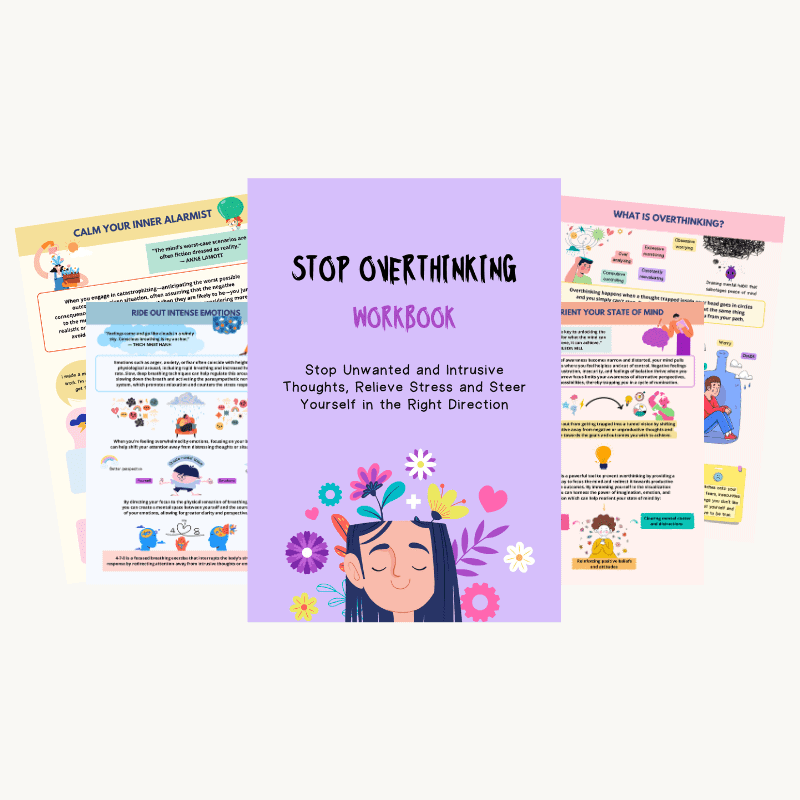
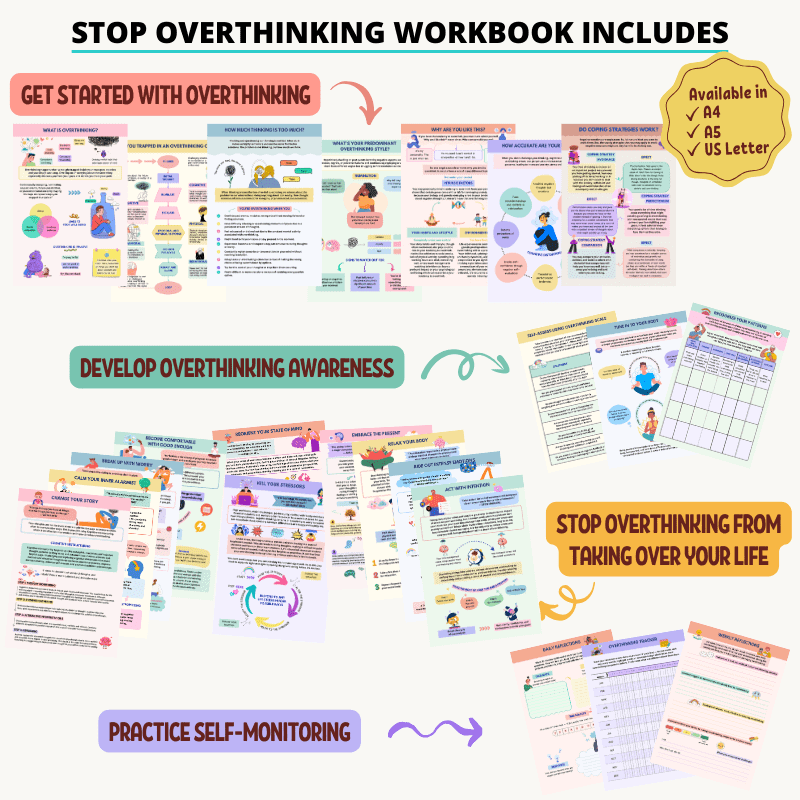
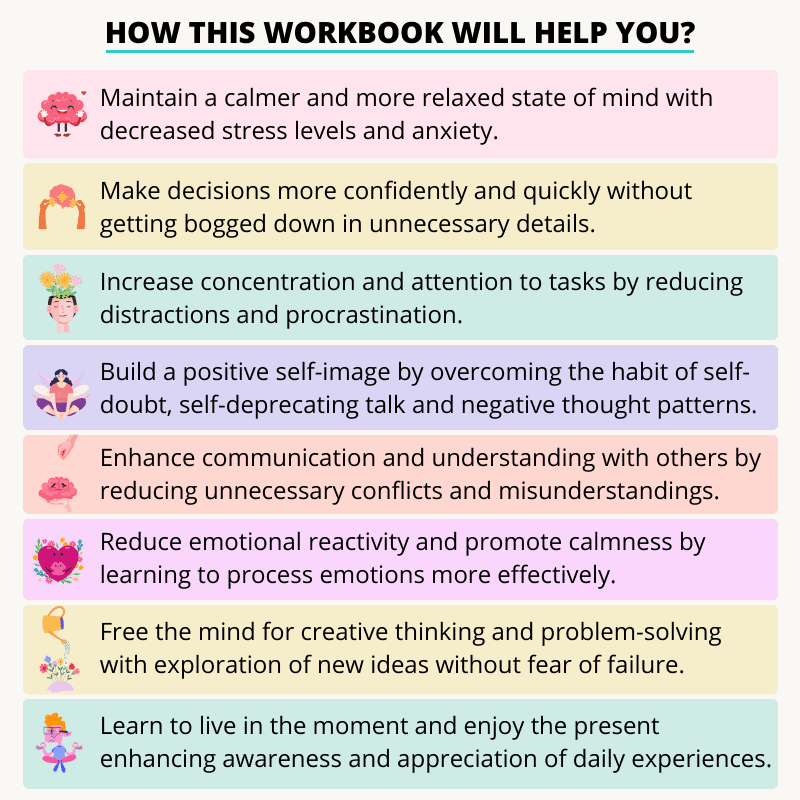
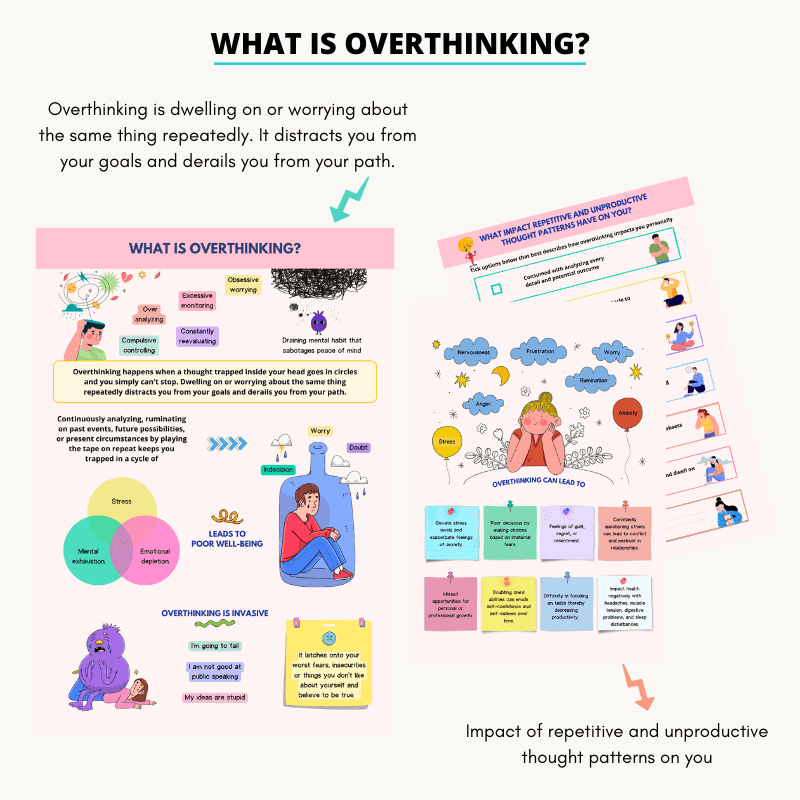
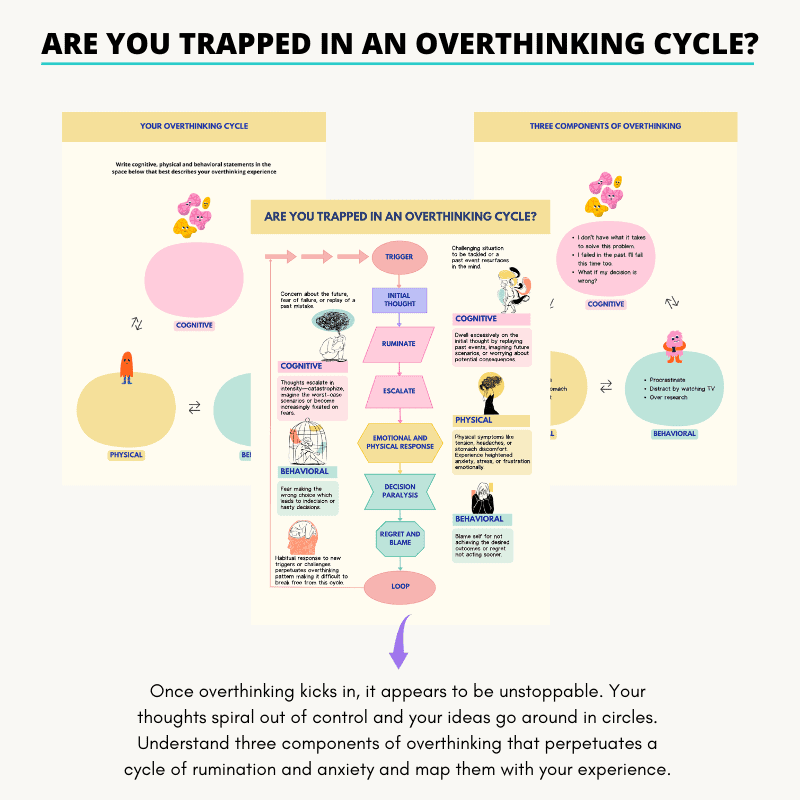
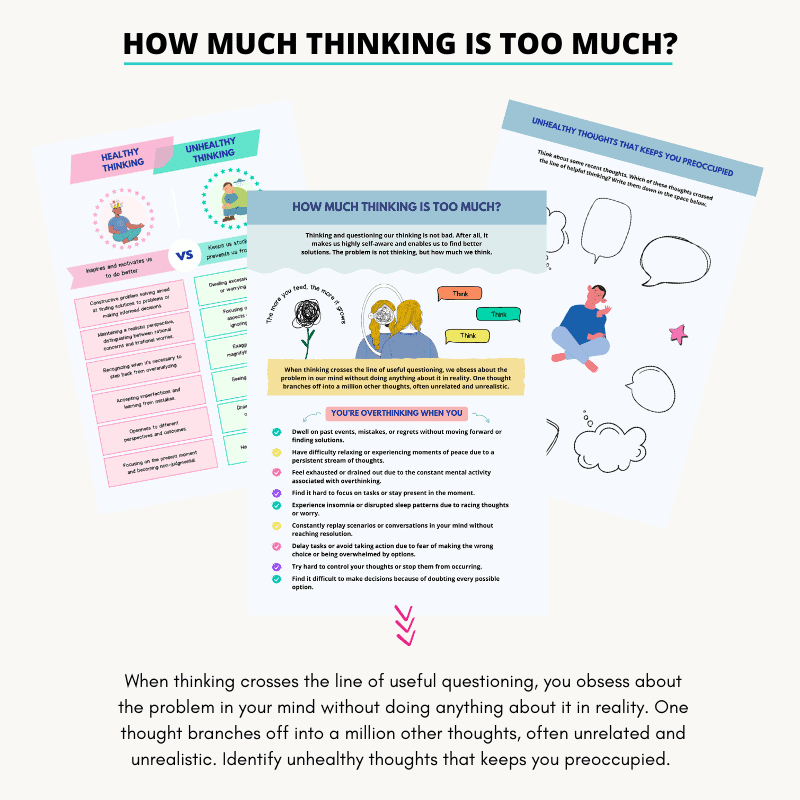
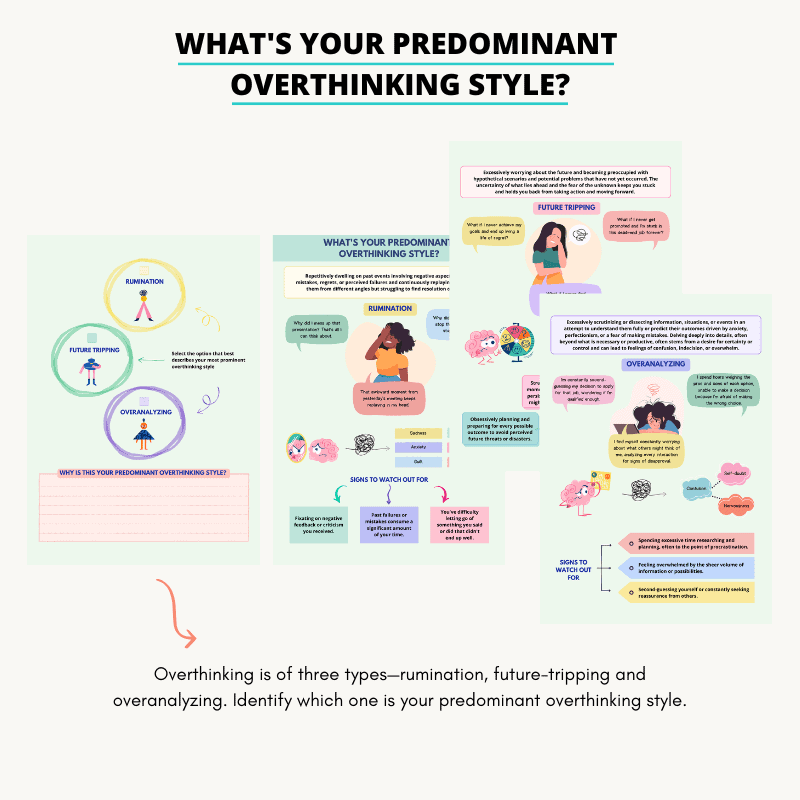
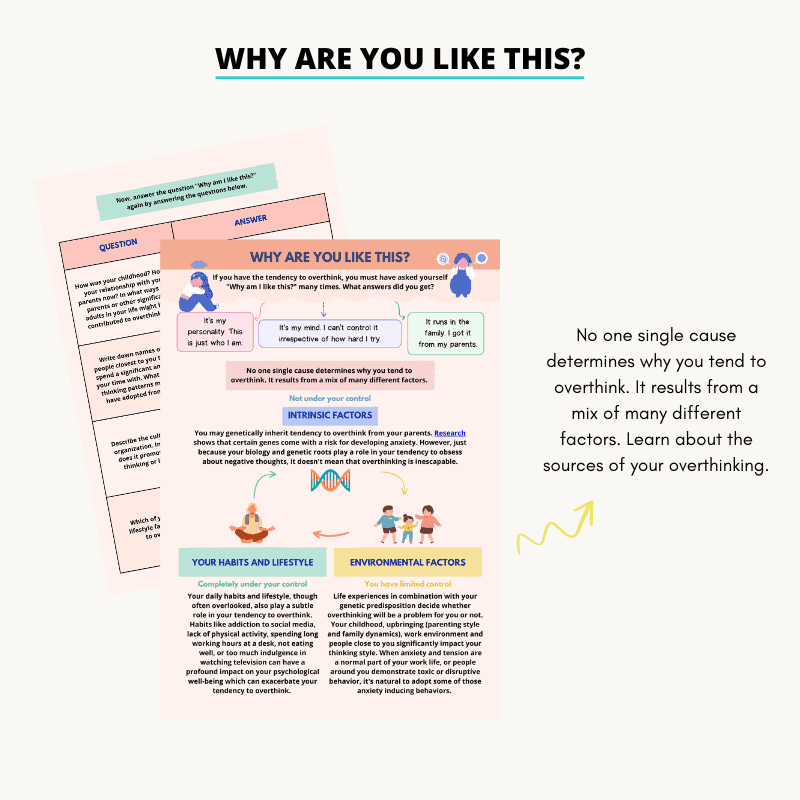
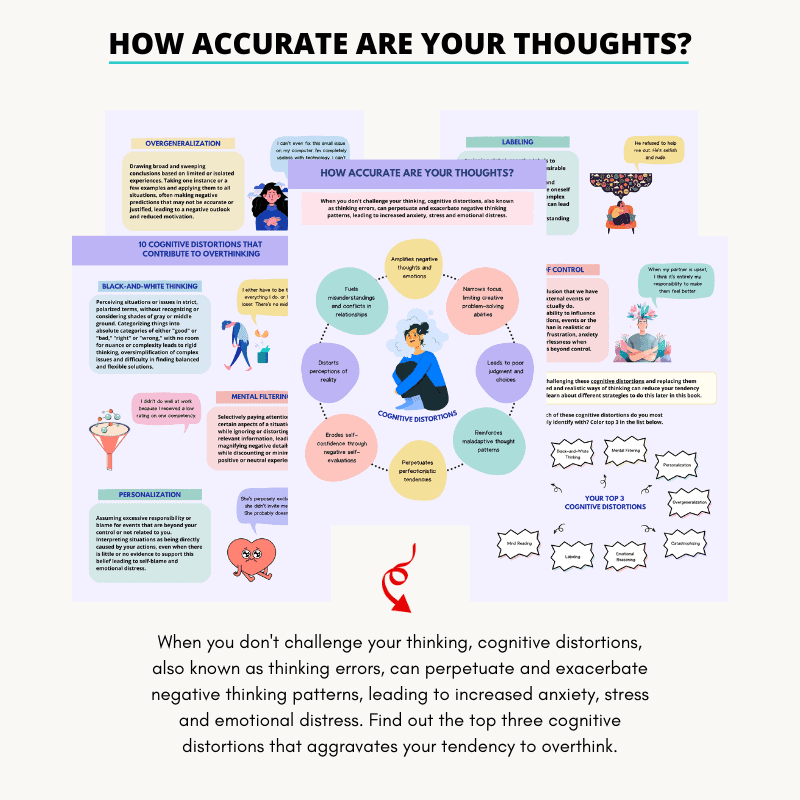
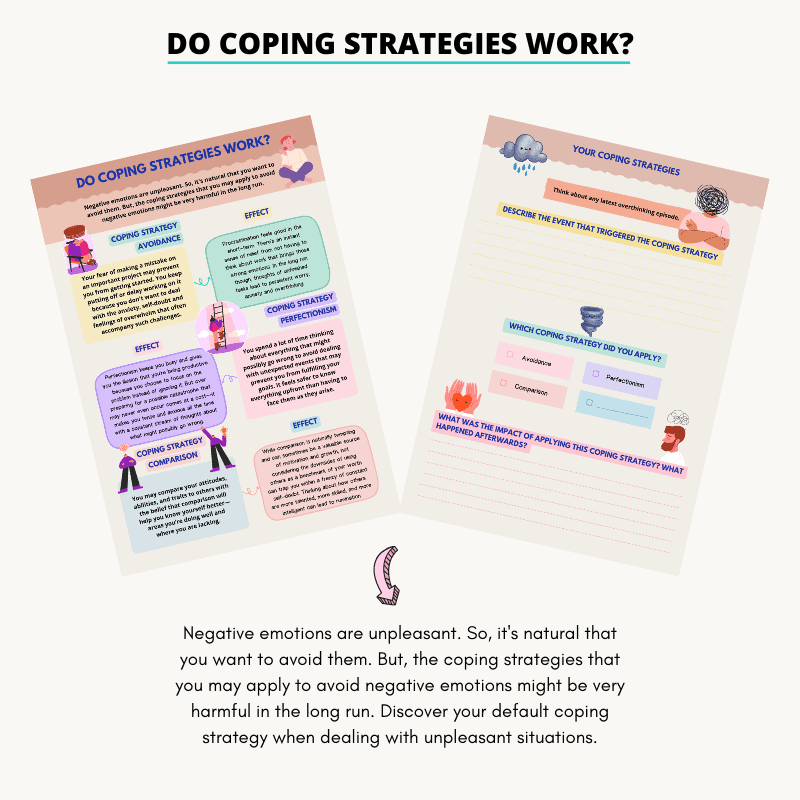
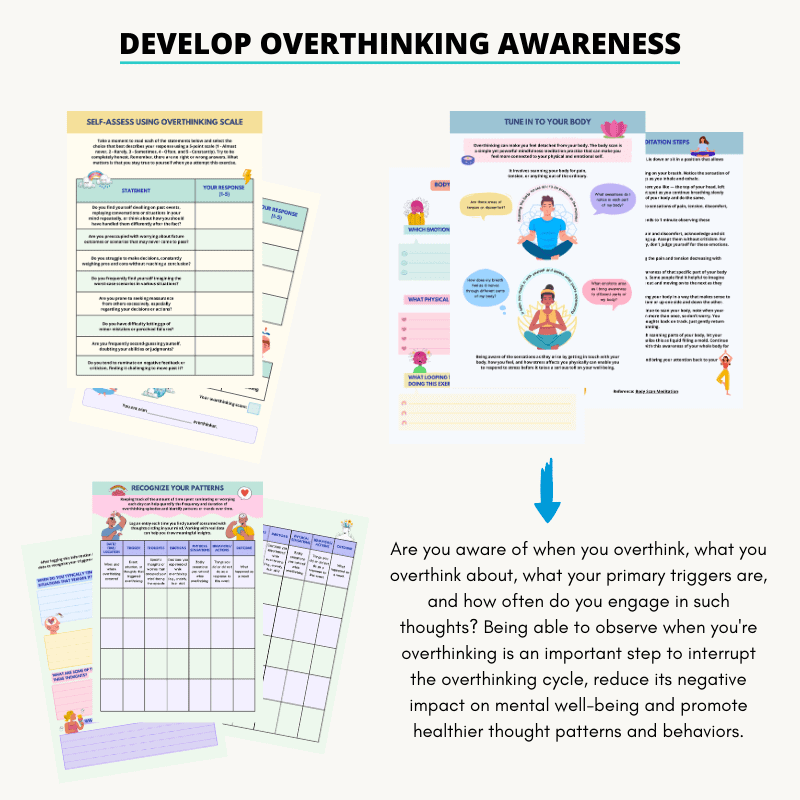
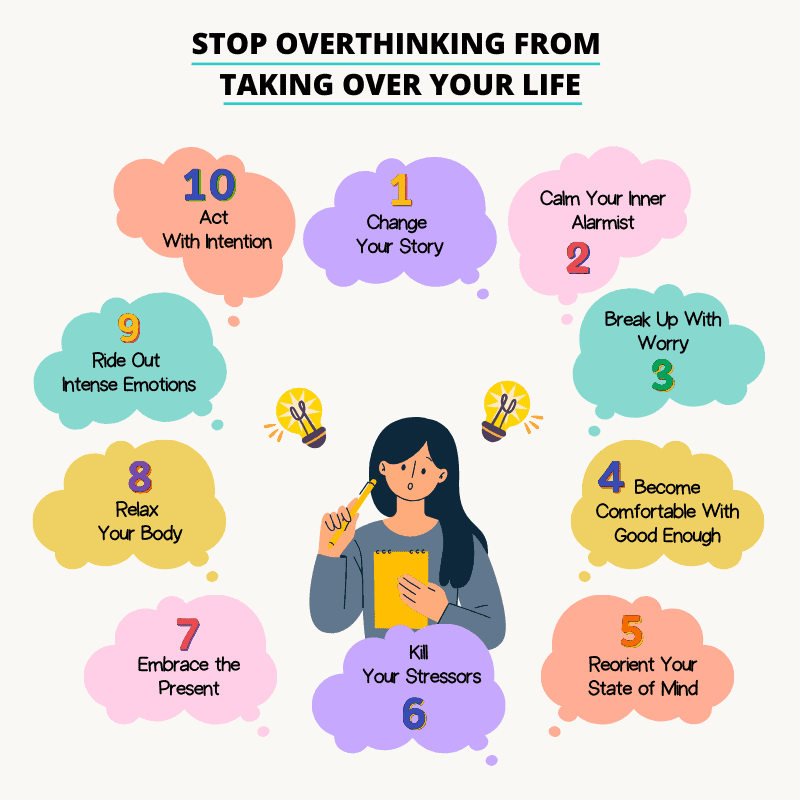
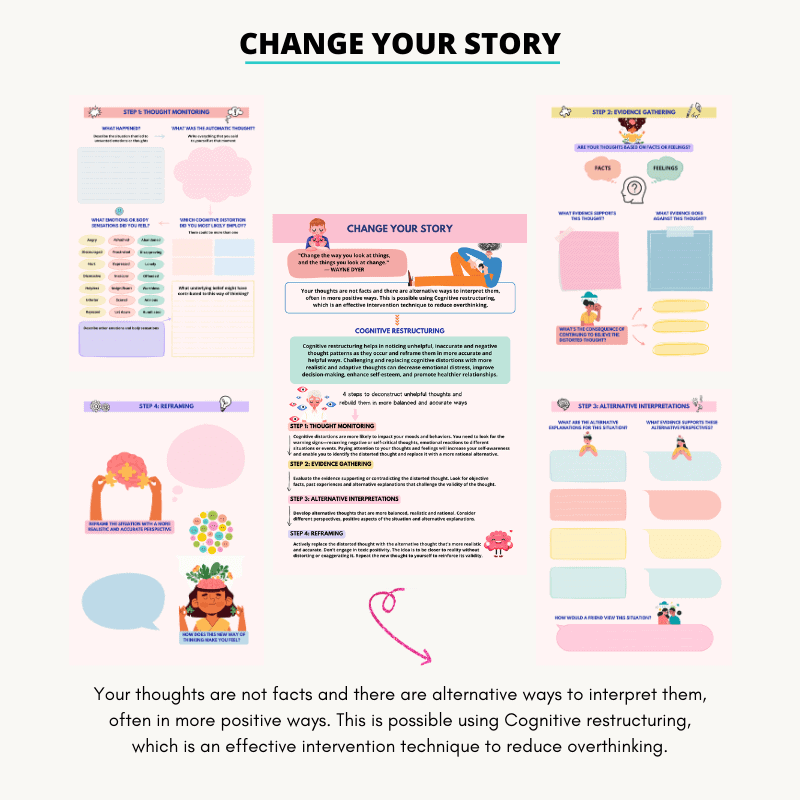
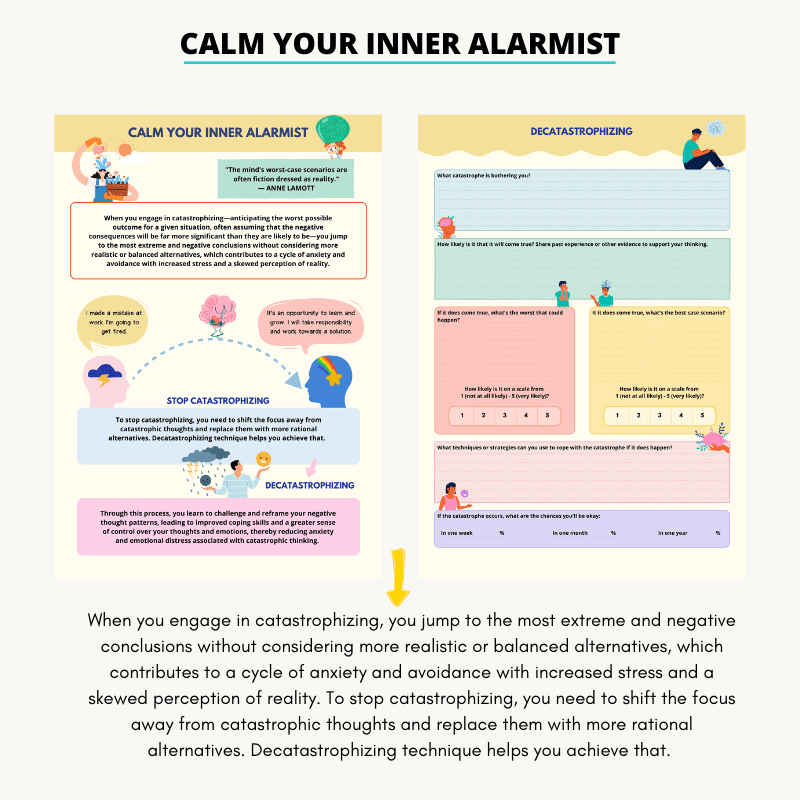
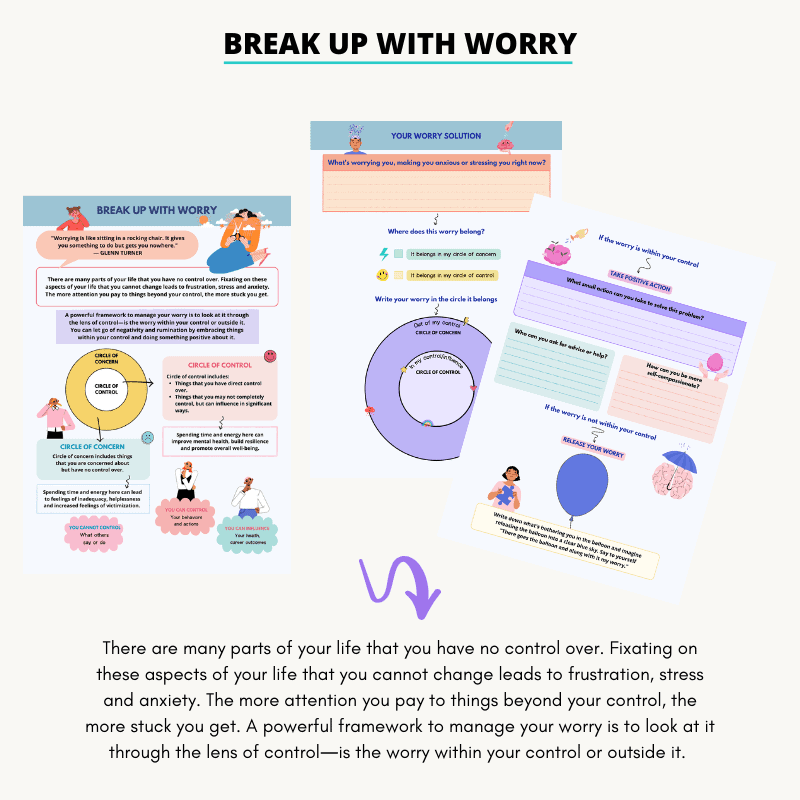

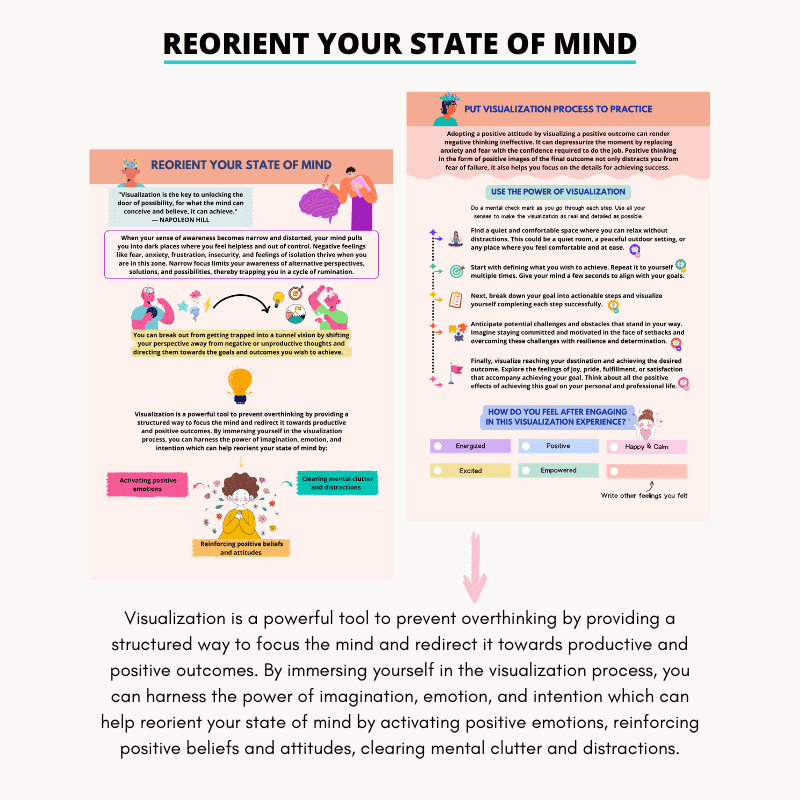

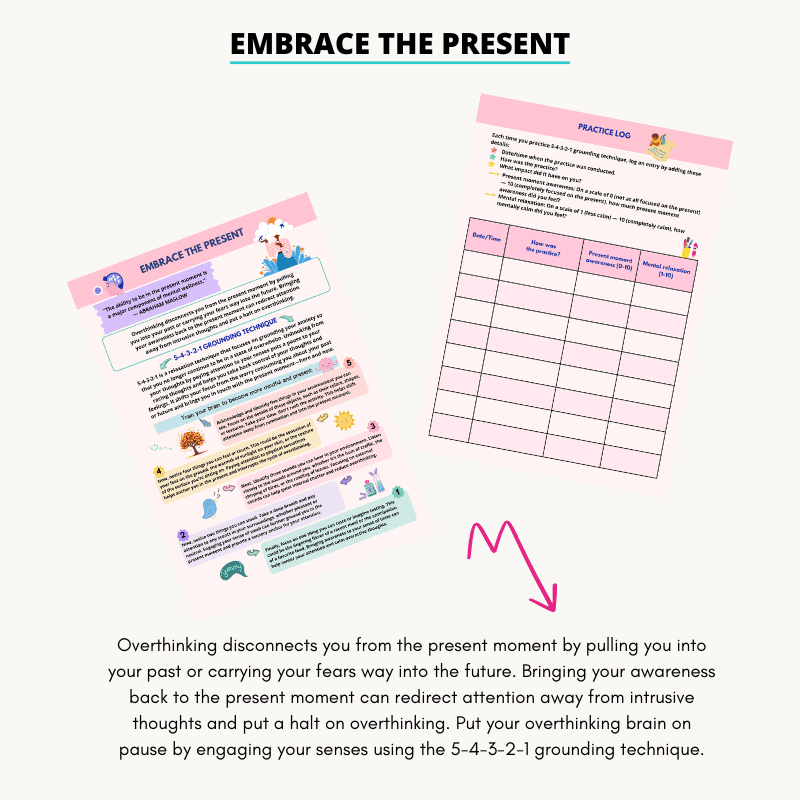
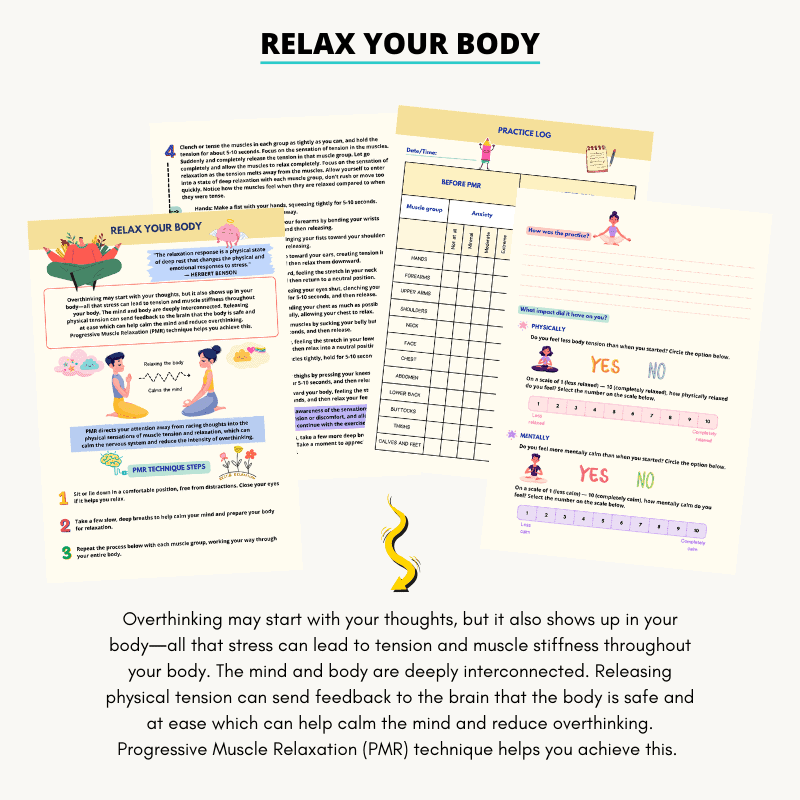
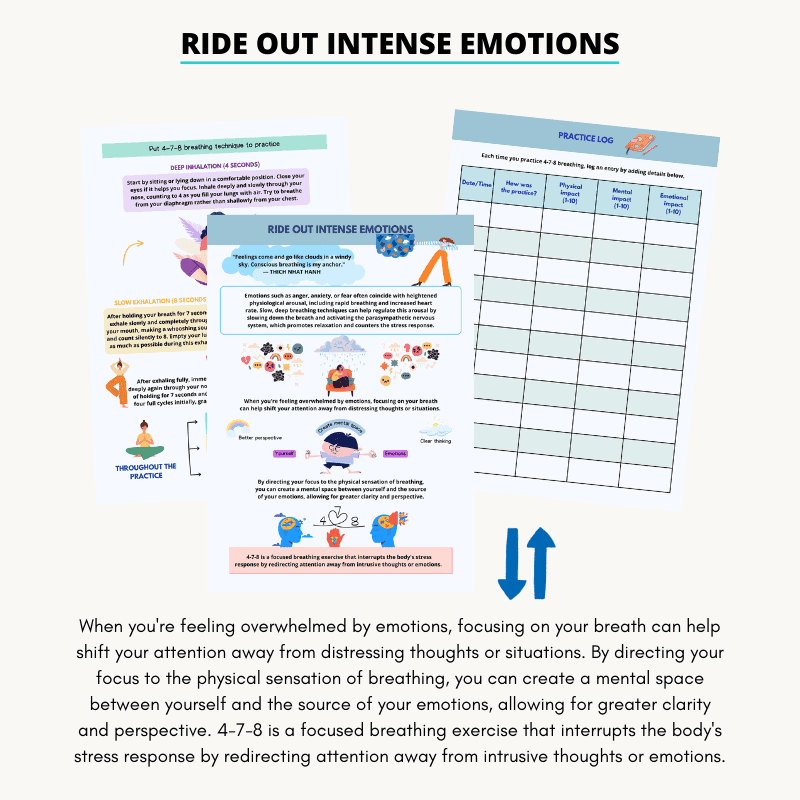
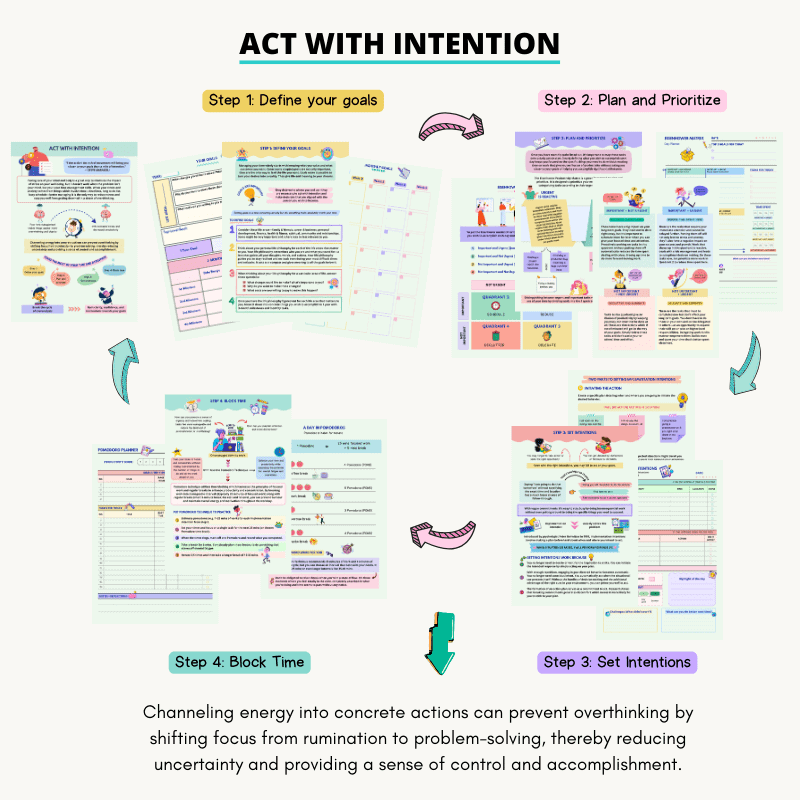
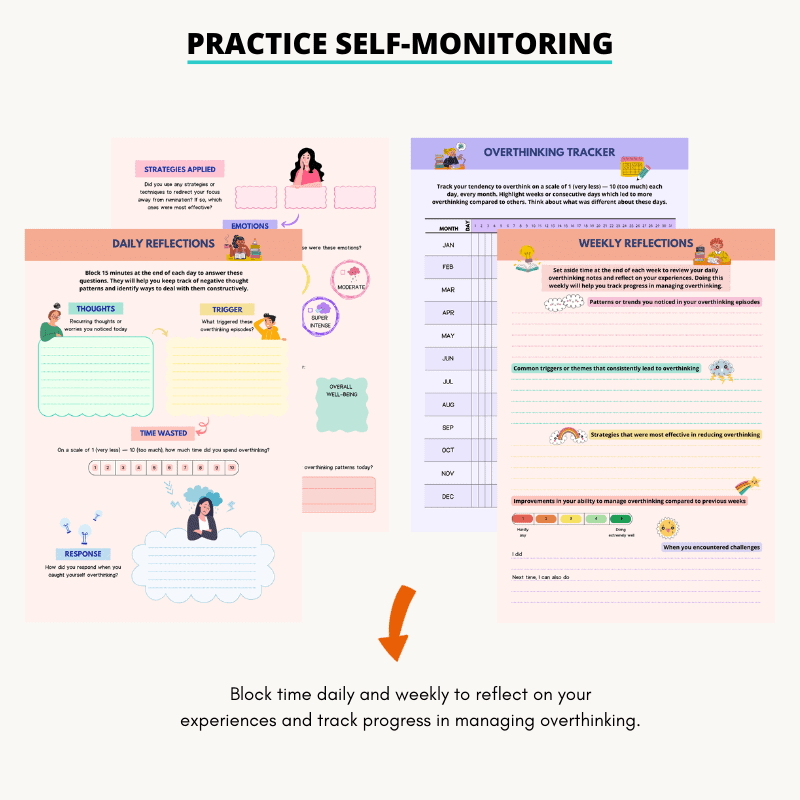
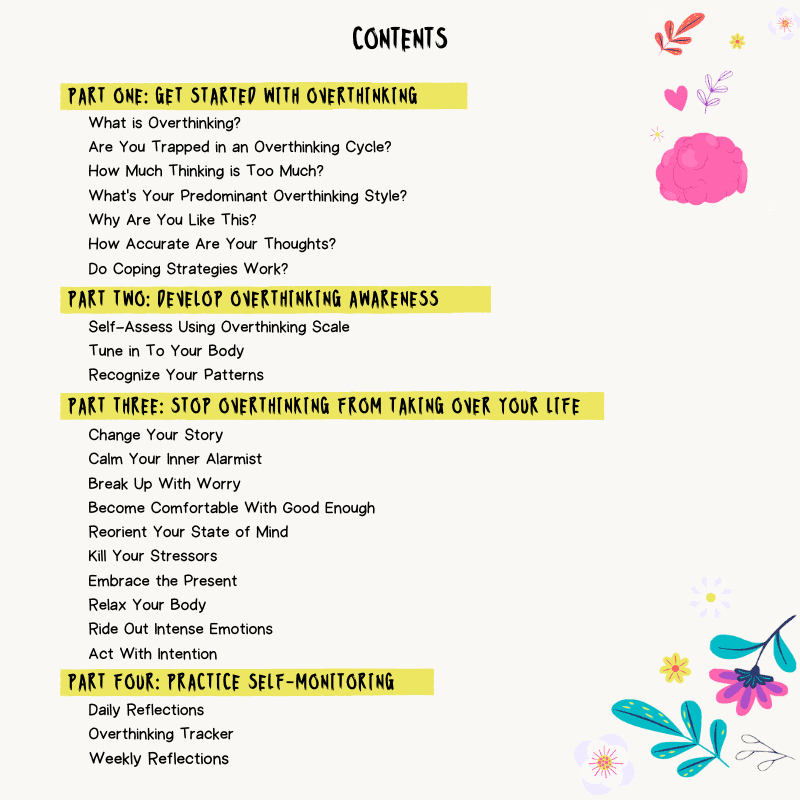
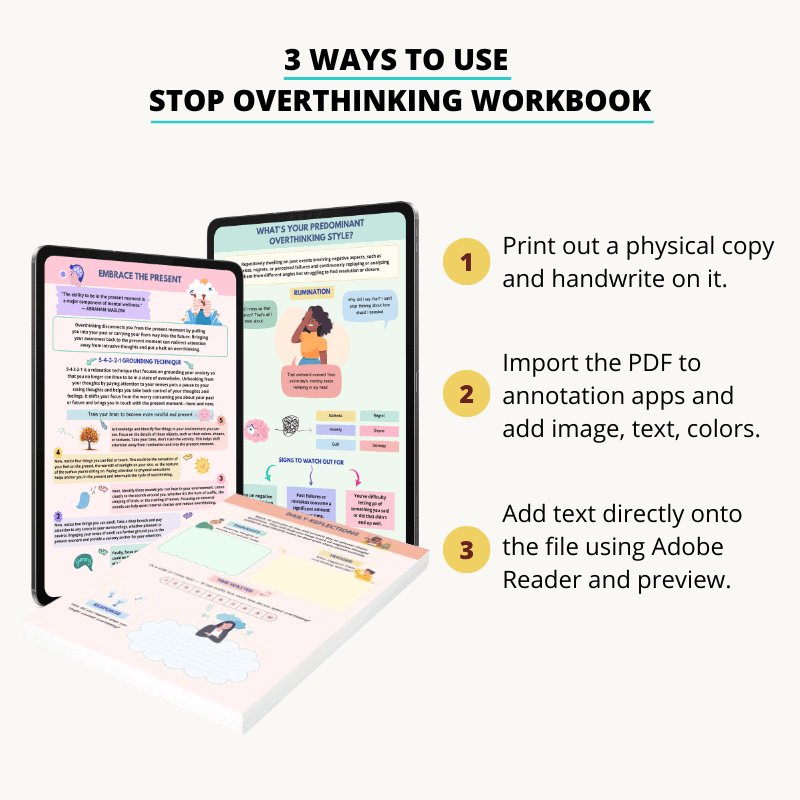
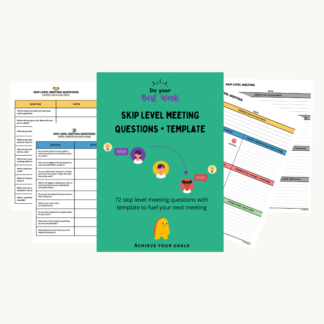
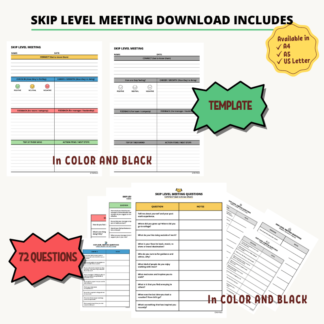
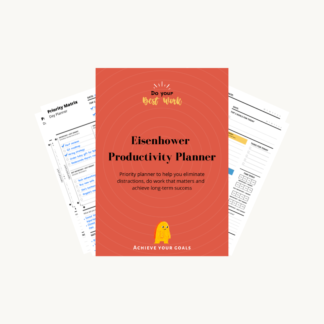
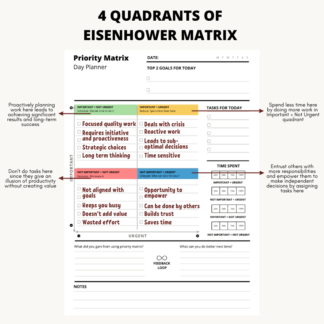
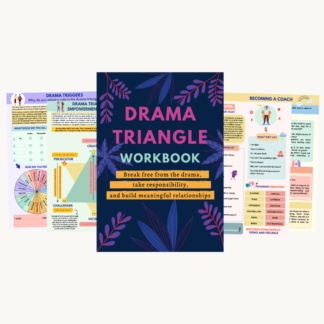
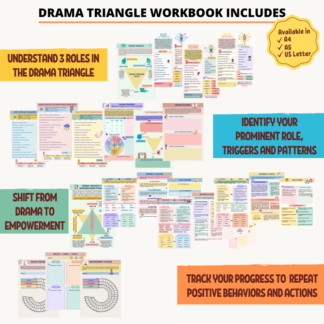
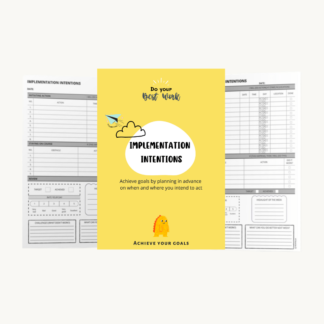
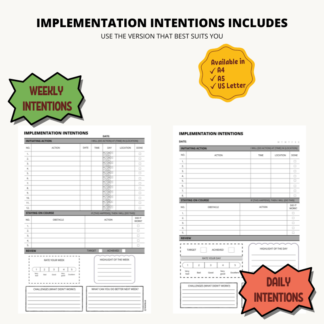
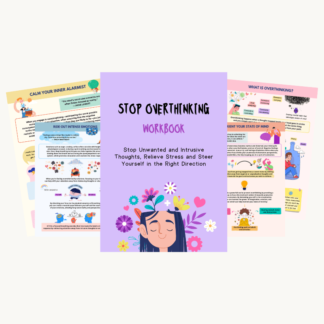
Reviews
There are no reviews yet.